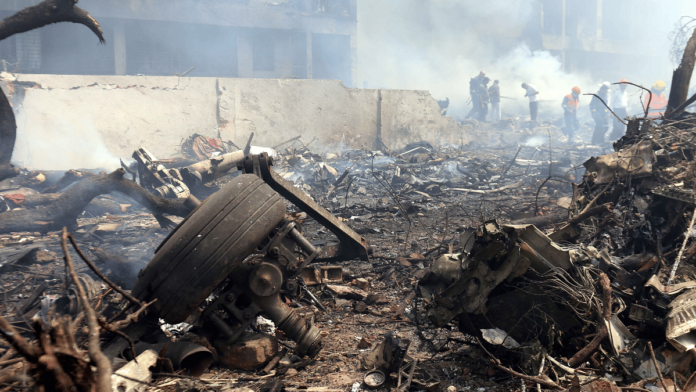
New Delhi: Aviation experts will carry out investigations, including the search and analysis of black box, to ascertain the reasons that led to the Air India flight AI171 crash.
The AI aircraft, a Boeing 787-8 Dreamliner, had crashed into the doctors’ hostel of a medical college in Ahmedabad’s Meghaninagar within 30 seconds of take-off. On Friday early hours, Air India confirmed that only one person of the 242 aboard the plane survived the crash.
The Aircraft Accident Investigation Bureau (AAIB) has already launched a formal investigation in line with international protocols set by the International Civil Aviation Organization (ICAO).
Mark Martin, founder and CEO of aviation safety firm Martin consultancy, told ThePrint that a team from the Indian aviation regulator, the Directorate General of Civil Aviation (DGCA), and that from every regulator where the aircraft is operated like the NTSB (National Transportation Safety Board), the EASA (European Union Aviation Safety Agency are expected to visit the crash site soon to begin the investigation.
Here’s what an investigation looks like after an air crash happens:
Retrieving black box & its examination
When an aviation accident occurs, a meticulous process is set in motion, starting with retrieving and analysing flight data captured on various recorders, including the Flight Data Recorder (FDR) and Cockpit Voice Recorder (CVR), also known as black boxes.
Water recoveries of FDR and CVR present additional challenges. If a recorder is found submerged, it is kept in water to prevent corrosion.
Specialist Sean Payne, who has been working behind the scenes to retrieve and analyze flight data captured on various recorders, told global flight tracking service Flightradar24 that “keeping the recorder in deionized water minimizes damage until it reaches the lab.”
Once flight recorders arrive at the lab, experts check their condition to see if the data can be recovered. If the recorder is intact, data can usually be downloaded easily. But damaged ones need more work.
The most important part is the crash-survivable memory unit (CSMU), which holds the key flight data. If needed, specialists move the data chips into a special “golden chassis”—a device designed to protect the data and allow for a safe download.
“We have in the laboratory every western-made flight recorder, ordered from the manufacturers with one simple modification: a modification that turns off any further writing of data,” Payne explained.
Flight data recorders contain hundreds of parameters that must be analyzed to reconstruct the sequence of events leading up to the crash. Meanwhile, the CVR holds crucial audio recordings from the cockpit, including pilot conversations and ambient sounds.
One of the most delicate aspects of the investigation is reviewing the cockpit voice recorder.
The primary goal is to verify whether the accident was recorded and to determine what insights can be gained. Importantly, CVR audio is legally protected.
Flight data recorders store hundreds of details about the plane’s systems, which help investigators piece together what happened before the crash. At the same time, the cockpit voice recorder (CVR) captures important sounds and conversations from the cockpit.
Listening to the CVR is one of the most sensitive parts of the investigation. The main aim is to check if the crash was recorded and to see what useful information it reveals.
Investigation
In case of major accidents, like the one in Ahmedabad, a team is deployed to examine, videograph and photograph the wreckage, which is also sent to labs for testing. The test results can provide information related to the landing impact, speed, velocity and angle.
But, when the aircraft is reduced to ashes or is extensively burnt, the examination of wreckage does not yield much information. Even the passenger seats, propellers and wings can help the investigators, Martin told ThePrint.
Court of Inquiry
The next step, according to Martin, is setting up a ‘Court of Inquiry’ comprising a three-member bench. The bench hears the case, including the eye-witness statements, testimonies of survivors, engineers, CEO of the airline, air traffic control and all others connected to the crash.
Report on findings
Once all data has been analysed, the findings are compiled in a final report that is made public. The report has to include a factual summary of the accident, technical findings, an analysis of flight data, cockpit audio, official statements, the probable cause of the accident and also list of safety recommendations to prevent similar incidents.
(Edited by Tony Rai)


